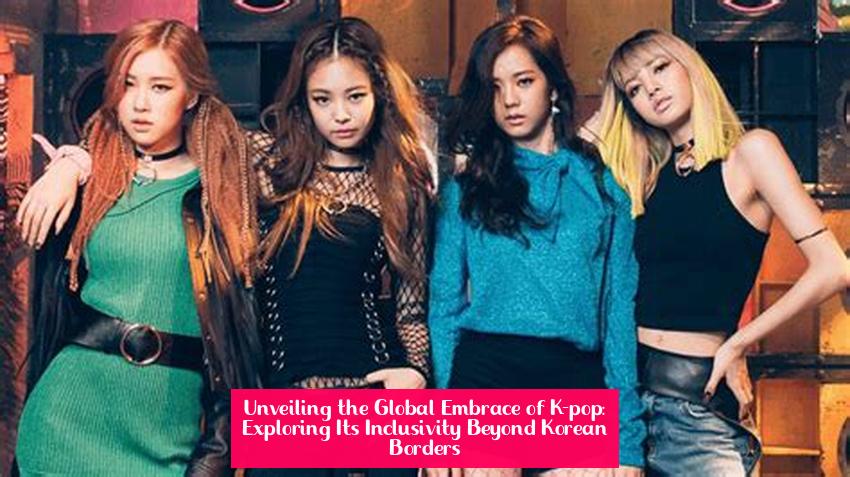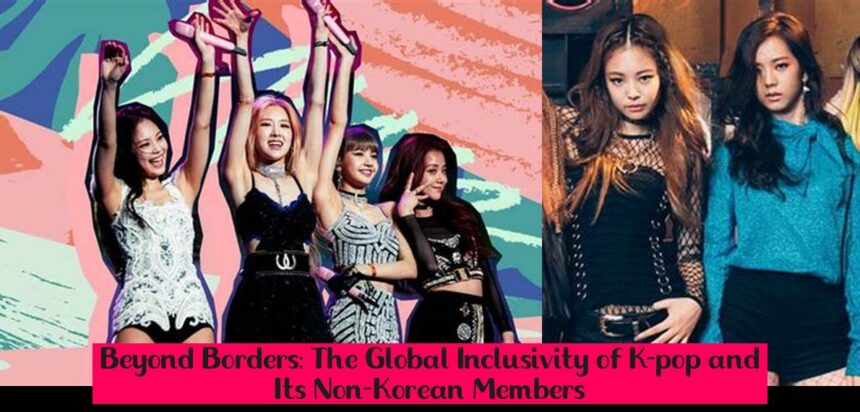Unveiling the Global Embrace of K-pop: Exploring Its Inclusivity Beyond Korean Borders
Is K-pop only Korean? This question has sparked countless debates and discussions, but the truth is far more fascinating than a simple yes or no. As we delve into the captivating world of K-pop, we uncover a rich tapestry of diversity, talent, and global appeal that transcends national boundaries. From non-Korean members enriching the K-pop landscape to groups with non-Korean majorities breaking barriers, the inclusivity of K-pop is a testament to its enduring power. Join us on this exhilarating journey as we unravel the global embrace of K-pop and discover its remarkable impact beyond the confines of Korea.
Key Takeaways
- K-pop is not exclusively Korean, as there are non-Korean members in some K-pop groups.
- Foreign members in K-pop groups are often from other East-Asian countries like Japan, China, Taiwan, and Thailand.
- K-pop has transformed into a global cultural phenomenon from its origins in South Korea during the 1990s.
- While the majority of K-pop idols are South Korean, there is a growing presence of idols from other nationalities, primarily from other East-Asian countries.
- Some K-pop groups have members from various countries such as Brazil, the United States, India, and Senegal, reflecting the diversity within the genre.
- EXP Edition was the first K-pop group made up entirely of non-Koreans, highlighting the evolving inclusivity of the genre.
Unveiling the Global Embrace of K-pop: Exploring Its Inclusivity Beyond Korean Borders
Read : Discovering the Most Popular Cities for Koreans to Live in Korea
K-pop, originating in South Korea, has captivated audiences worldwide, propelling it into a global cultural phenomenon. While its roots lie in South Korean popular music, K-pop has transcended national boundaries, embracing diversity and inclusivity. This blog post delves into the evolving nature of K-pop, showcasing how it has welcomed non-Korean members into its vibrant tapestry of artists, reflecting a genre that resonates with a global audience.
Don’t Miss – Can a 12-Year-Old Become a K-Pop Idol? Age Requirements, Training, and Success Stories
Non-Korean Members Enriching the K-pop Landscape
K-pop groups have increasingly incorporated non-Korean members, hailing from various East Asian countries such as Japan, China, Taiwan, and Thailand. This trend has infused K-pop with a kaleidoscope of cultural influences, enriching its musical tapestry and captivating a broader fan base.
For instance, the renowned girl group Blackpink boasts a member from Thailand, Lisa, who has won hearts with her captivating dance moves and powerful rap skills. Similarly, the boy group NCT, known for its large and diverse lineup, features members from China, Japan, and Thailand, showcasing the group’s global appeal.
Don’t Miss – Fluent English Speakers in K-Pop: Uncovering Which K-Pop Idol Can Speak English Fluently
Breaking Barriers: K-pop Groups with Non-Korean Majorities

The inclusivity of K-pop has reached new heights with the emergence of groups composed entirely of non-Korean members. EXP Edition, a groundbreaking boy group, made history as the first K-pop group to feature members from various countries, including Canada, Japan, Taiwan, and the United States. Their debut album, “Feel Like This,” garnered significant attention, demonstrating the growing acceptance of non-Korean artists in the K-pop industry.
Similarly, Blackswan, a girl group with members from Brazil, the United States, India, and Senegal, has challenged traditional notions of K-pop. Their unique backgrounds and diverse talents have earned them a loyal fan base, further solidifying the global reach of K-pop.
Embracing Diversity: A Reflection of K-pop’s Global Appeal
The increasing presence of non-Korean members in K-pop groups mirrors the genre’s global reach and its ability to transcend cultural boundaries. K-pop’s inclusivity has fostered a sense of unity and appreciation for diverse cultures, resonating with audiences worldwide.
This trend also reflects the evolving nature of the music industry, where artists from different backgrounds collaborate and share their talents, creating music that appeals to a global audience. K-pop’s embrace of diversity has undoubtedly contributed to its meteoric rise and its status as a global cultural phenomenon.
Conclusion: K-pop’s Global Embrace – A testament to Its Enduring Power
K-pop’s evolution from a South Korean music genre to a global phenomenon is a testament to its inclusivity and its ability to captivate audiences worldwide. The presence of non-Korean members in K-pop groups has enriched the genre, adding layers of cultural diversity and broadening its appeal.
As K-pop continues to break down barriers and embrace artists from various backgrounds, it reinforces its status as a truly global cultural phenomenon. Its inclusivity serves as an inspiration, demonstrating the power of music to unite people from different cultures and backgrounds.
Is K-pop only Korean?
Answer: No, K-pop is not exclusively Korean. It has evolved into a global cultural phenomenon with non-Korean members in some K-pop groups.
Can a non-Korean be in a K-pop group?
Answer: Yes, it is not unusual for K-pop groups to have foreign members, typically from other East-Asian countries like Japan, China, Taiwan, and Thailand.
Can k-pop idols not be Korean?
Answer: Yes, the majority of K-pop idols are South Korean, but there is a growing presence of idols from other nationalities, primarily from other East-Asian countries such as Japan, China, Taiwan, and Thailand.
Is K-pop Korean or Chinese?
Answer: K-pop, short for Korean Pop, originated in South Korea during the 1990s and has transformed into a global cultural phenomenon, making it distinctly Korean.
Is Kpop only for Koreans? Can people of other countries be part of K-pop groups?
Answer: No, K-pop is not only for Koreans. People from other countries, primarily from other East-Asian nationalities, can also be part of K-pop groups, reflecting the diversity within the genre.







